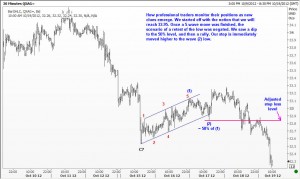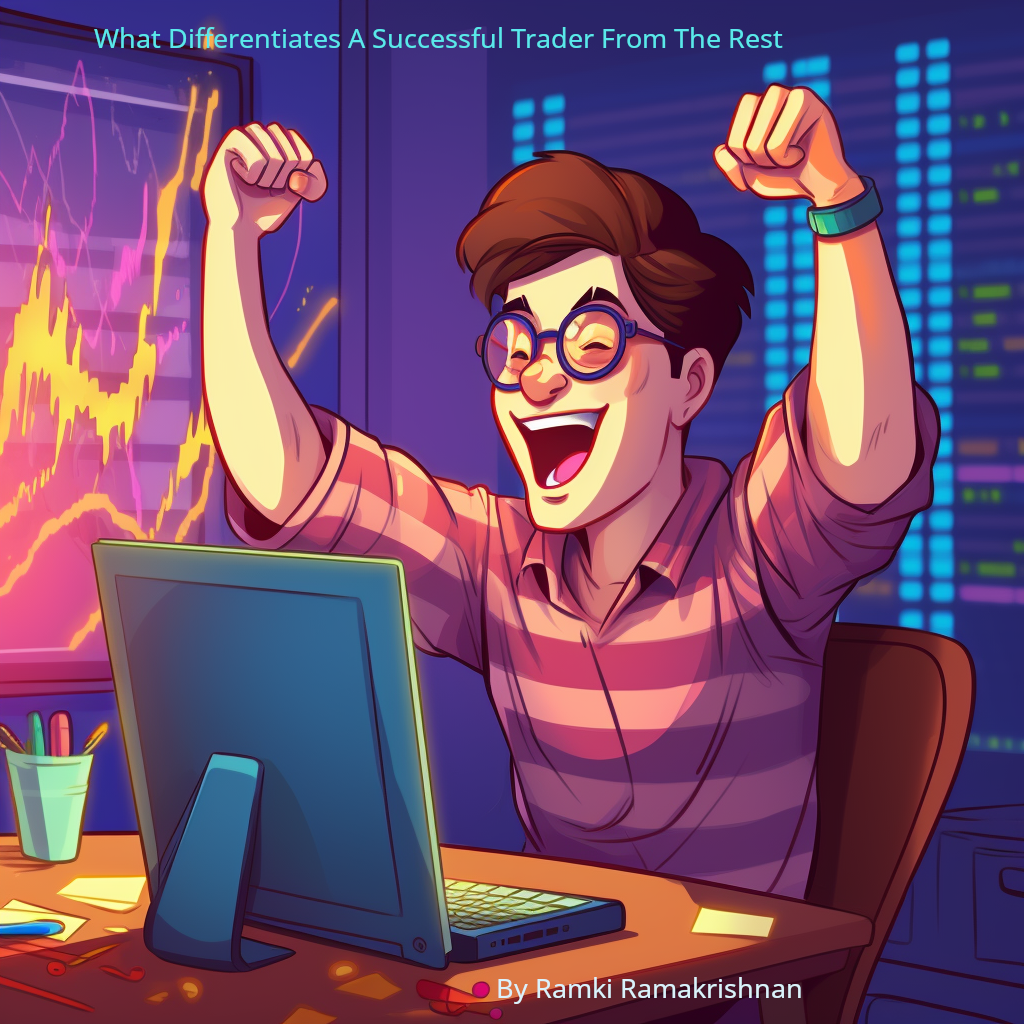As regular readers know, all wave counts are work-in-progress. I identified 32.55 as a low-risk buy in Silver before it happened with the count that an extended 5th wave was highly likely to finish there. Sure enough, we got a smart rally to 33.10. It was possible to make out that this move was made up of 5 sub waves, although it looked like a leading diagonal. As a trader, I continued to watch the position, still keeping my stop loss at 32.50. When the inevitable correction came down to the 50% retracement level followed by a smart bounce, I was all smiles. The speed of the rally from the end point of wave (2) was also perfect. But I couldn’t relax, because real money is involved. This is no arm-chair analysis. The stop loss had to be moved promptly to the low of wave (2) so that not only we preserve some profits, but also ensure we won’t get taken out by any unexpected event. As it happened, Silver came down and stopped the trade just below the wave (2) low. Then we got another rally, but there is no question of chasing it now. A trade has to work as anticipated. Any recovery after an extended fifth wave down move should be both RAPID and clean!

You now have an example of how one needs to monitor a trade even when it looked good. This is where a good adviser will help. I would have shared with you the need to move the stop loss to 32.80. Without that advice, you would still be thinking that everything is working out just fine. Some others might even attempt buying at 32.60 on the second attempt there, not realizing that professional traders are no longer interested in trading Silver from the long side just now. This is a terrific example for beginning traders to learn from. Nothing in the market is certain. However, we have to take risks at precise levels at the right time. Failure to act at the right time, both to enter a trade and to exit it will cause financial loss.

